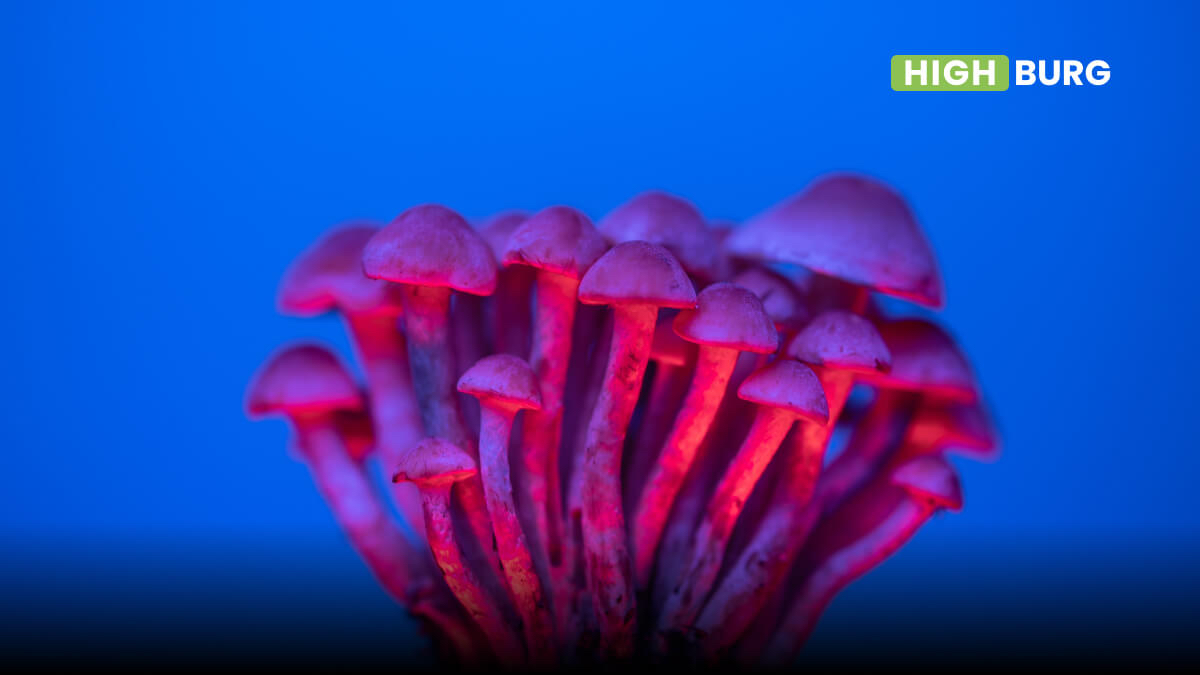If you ever wondered which strains of magic mushrooms are more potent, and which are more suitable for mild experience, you’ve probably seen this term: tryptamines. Most sites that provide the info on magic mushroom strains are covering it as “Total Tryptamines”. So what is it exactly? And why do tryptamines matter?
A bit of Psychedelic Mushroom History
Our knowledge of the components of magic mushrooms was not always deep enough. In fact,
psilocybin mushrooms have been around since mesoamerica. [1] Back then they were consumed in fatidical and spiritual ceremonies.
In 1970, the scientists declared psilocybin, the core component of magic mushrooms, as an entheogen: meaning “perception altering substance”, in short. Now they are used as an escape from depression and stress.
They cause mind altering and kaleidoscopic effects, and expanding hallucinations which cause the emotion of euphoria to rise in the individual intaking it. So… where do these hallucinations and effects come from? You’ve guessed it: the tryptamines.
The Active Components of Magic Mushrooms — Explained
Now, please follow us on this one:
Magic mushrooms are polyphyletic fungus, containing psilocybin.
Psilocybin is a prodrug, meaning it is pharmacologically inactive at first.
After intake, psilocybin turns into its active form psilocin, that is the reprobate behind the mind altering and kaleidoscopic effects.
Psilocin is a tryptamine alkaloid and also a serotonergic substance. It consists of substituted tryptamine.
What Tryptamine Is
Tryptamine is obtained from plants like Chacruna, animals, and fungi. It is a neurotransmitter and an indolamine metabolite of essential amino acids[2]. Tryptamine has multiple properties across different systems:
- Dopaminergic;
- Serotonergic;
- And glutamatergic.
These systems, in simple terms, control the mood, cognition and perception in the body.
Structural similarity allows tryptamines to manipulate serotonin receptors, particularly the 5-HT2A receptor, leading to altered sensory perception and profound psychological experiences[3].
The Effects of Tryptamines
When you take magic mushrooms containing Tryptamines, a long list of instinctive effects can be seen. Some of the effects that take place include:
- Euphoria;
- Instant pleasure;
- Excitement.
Visual and mental hallucinations provide a spiritual experience. Various changes in perception may cause distortion of sight for a small period of time and twisted sense of time[4].
The effects vary on the dosage, differences in individual, and environmental factors.
Tryptamines act on various regions of the brain, including the prefrontal cortex, and the default mode network (aka DMN), leading to a distortion and disruption of typical neural activity and a sense of expanded consciousness.
How Tryptamines Make Psychedelic Mushrooms Useful
Tryptamines that are found in magic mushrooms have gained notice and attention for their potential therapeutic usage and application.
A wide range of research suggests that therapy assisted with psilocybin can be very efficient in treating numerous mental conditions, including but not limited to:
- Depression;
- Anxiety;
- Post traumatic stress disorder (PTSD);
- And addiction.
The unique and distinctive properties of tryptamines enable them to encourage neuroplasticity, enhance emotional processing and facilitate introspection and self-reflection.
Psilocybin-aided therapy often involves a guided session with a trained professional, creating a supportive and encouraging environment and surrounding, for individuals to explore their thoughts, emotions, and experiences.
How to Utilize Tryptamines to their utmost Potential
Although we know now, what tryptamines are, their psychoactive effects, their therapeutic applications and benefits. We are yet to understand how to correctly utilize them to stay risk free, and also to receive the most benefits. Taking the psilocybin cup as reference, which is a competition where growers submit their samples of psychedelic mushrooms to be tested and ranked for potency, it was found that the average tryptamine concentration was found to be around 0.83%, being a mixture of psilocybin, psilocin and related compounds.
The strongest sample found and tested, contained 1.41% total tryptamines, which is double the average of 0.6-0.85% as we found earlier. For example, the average concentration of Total Tryptamines in Amazon strain was found to be 1.36% but the peak content was found to be 1.85%, a significant increase. To achieve the highest possible effect, staying risk free, one should utilize 1.41% concentration of total tryptamines and related compounds, while staying average and normal, 0.6-0.83% should be utilized[5].
Some more examples of strains can be studied to understand further the importance of concentration:
- Albino Chodewave has average concentration 1.19% while the peak concentration is 1.47%.
- Yeti has average concentration 1.17% while the peak concentration is 1.56%.
- Tidal Wave has average concentration 1.17% while the peak concentration is 3.82%.
- Penis Ivy has average concentration 1.15% while the peak concentration is 2.90%.
So What’s Next for Psychedelic Tryptamines
Sure, before the practices become widespread, a set of certain conditions should be implemented. Most importantly, future patients should have a clear understanding of the importance of the experience — and its potential consequences.
Proper set and setting, dosage must be controlled, and professional guidance is a must. These precautions are crucial to minimize potential risks associated with psychedelic experiences. Tryptamines, while are considered safe when used responsibly, but individuals with certain medical conditions or predispositions should take caution.
As research into the therapeutic implementations of psilocybin continues to expand, a greater understanding of the pros and cons associated with tryptamines in magic mushrooms will emerge.
With careful deliberation of safety protocols and legal frameworks, these compounds may pave the way for novel treatments and deeper understanding of human consciousness.
